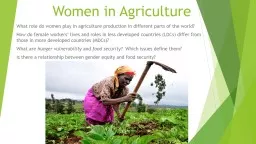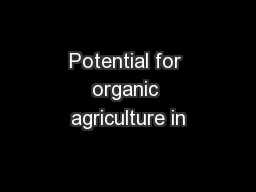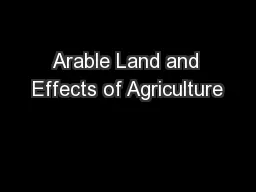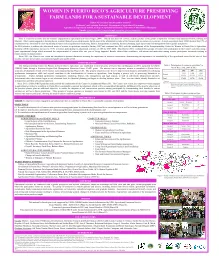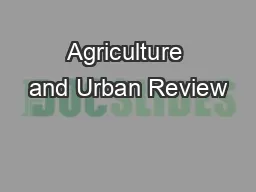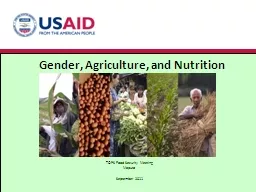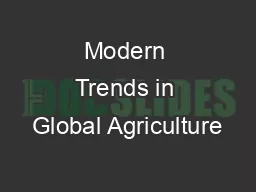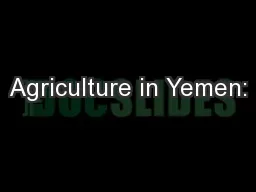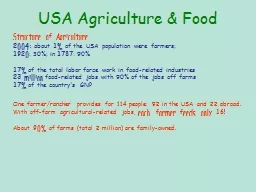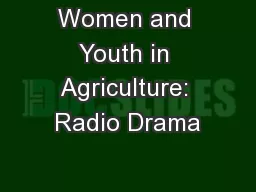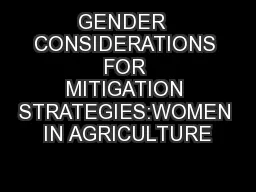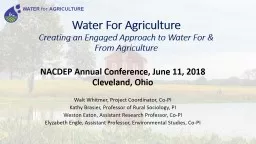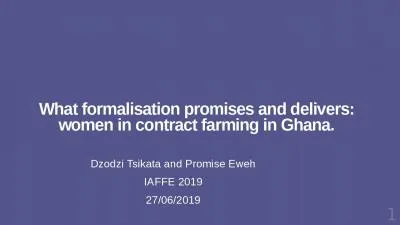PPT-Women in Agriculture
Author : pasty-toler | Published Date : 2017-01-23
What role do women play in agriculture production in different parts of the world How do female workers lives and roles in less developed countries LDCs differ from
Presentation Embed Code
Download Presentation
Download Presentation The PPT/PDF document "Women in Agriculture" is the property of its rightful owner. Permission is granted to download and print the materials on this website for personal, non-commercial use only, and to display it on your personal computer provided you do not modify the materials and that you retain all copyright notices contained in the materials. By downloading content from our website, you accept the terms of this agreement.
Women in Agriculture: Transcript
Download Rules Of Document
"Women in Agriculture"The content belongs to its owner. You may download and print it for personal use, without modification, and keep all copyright notices. By downloading, you agree to these terms.
Related Documents

